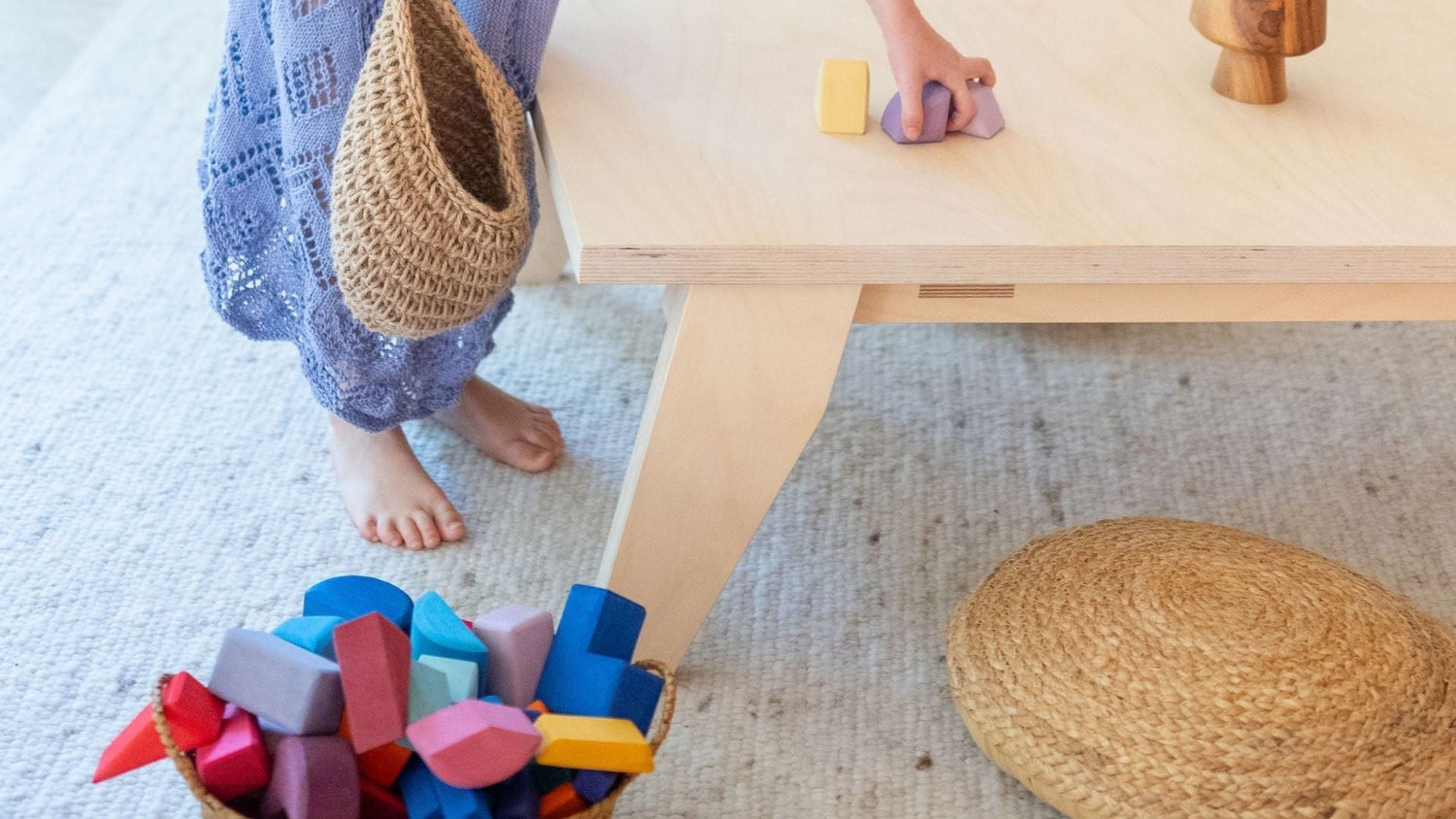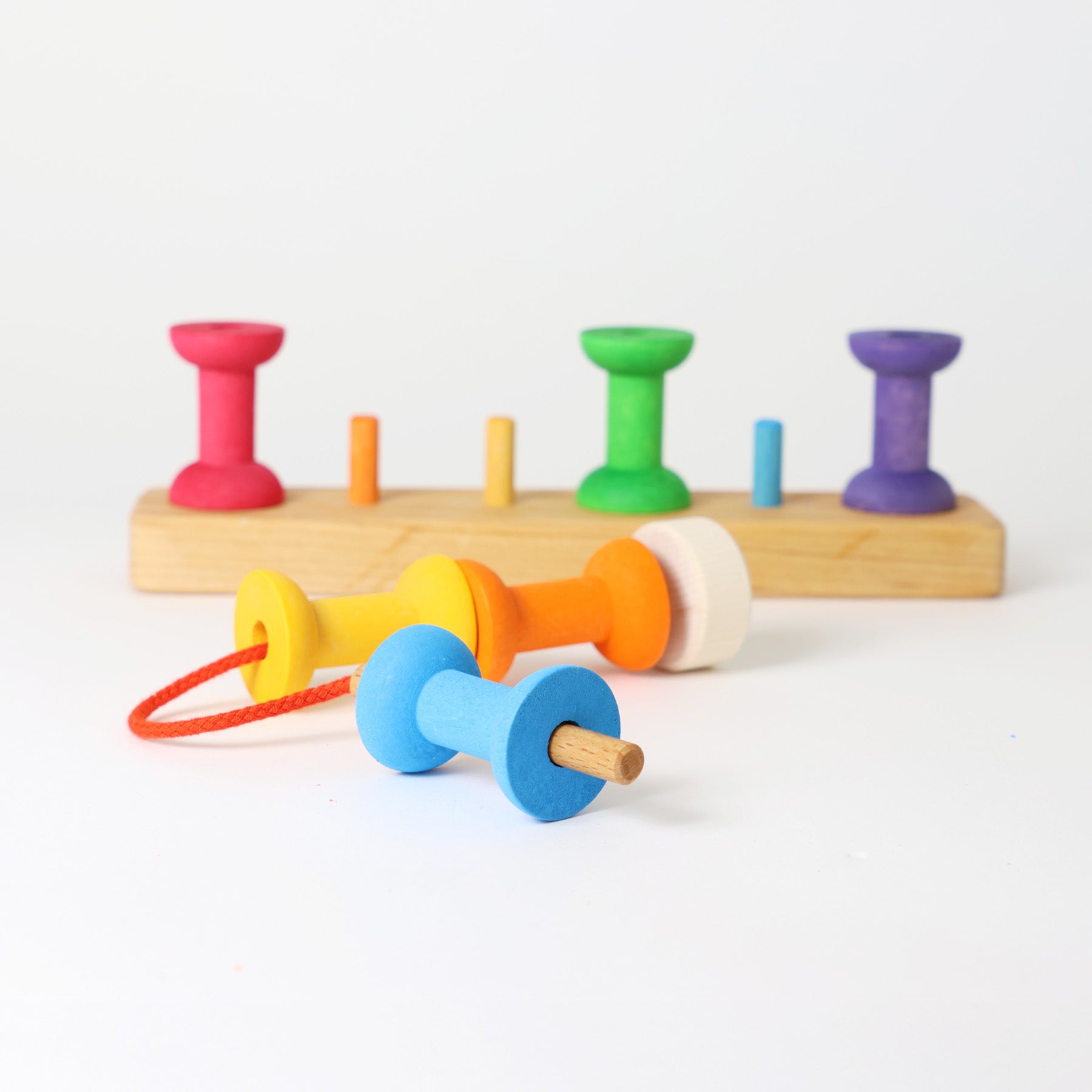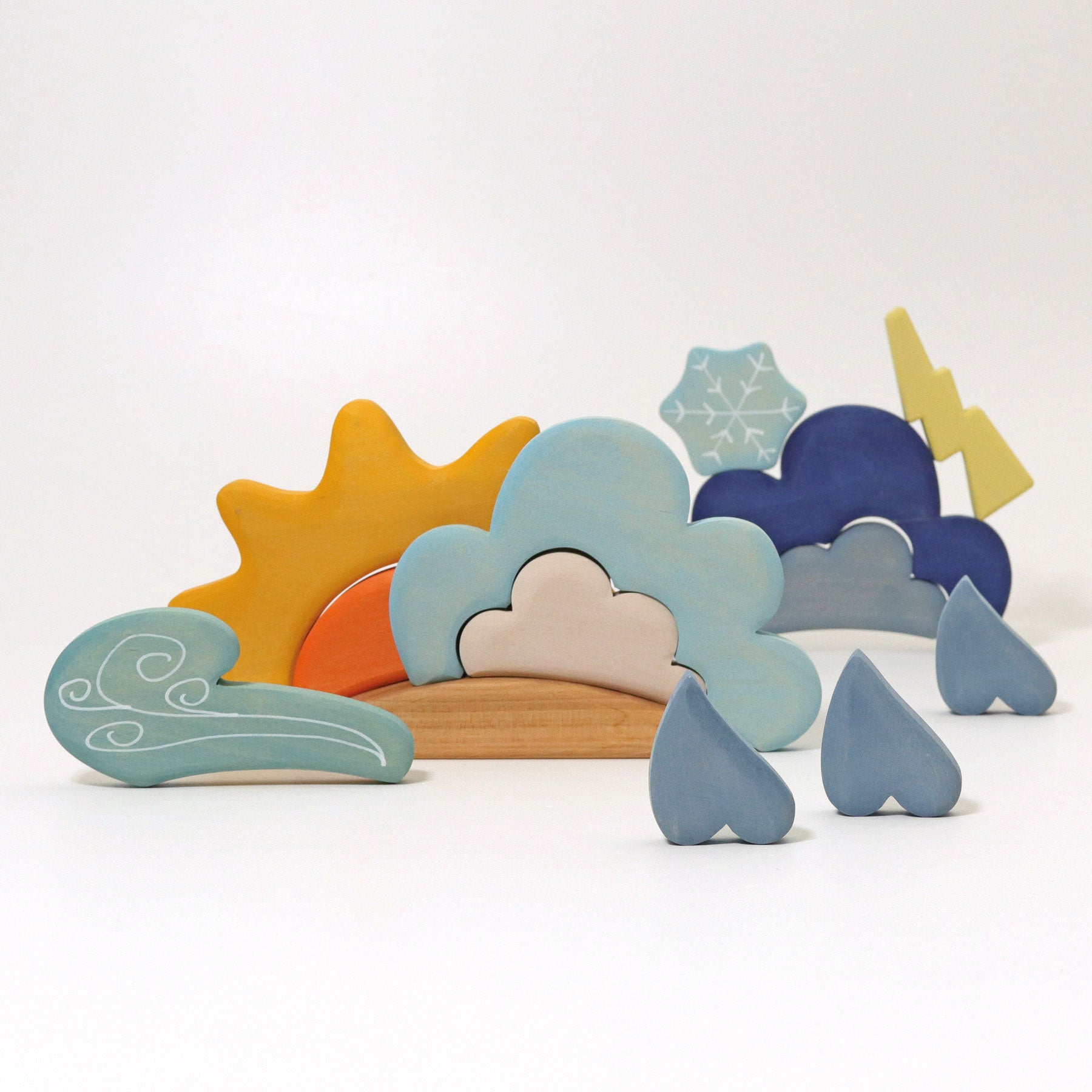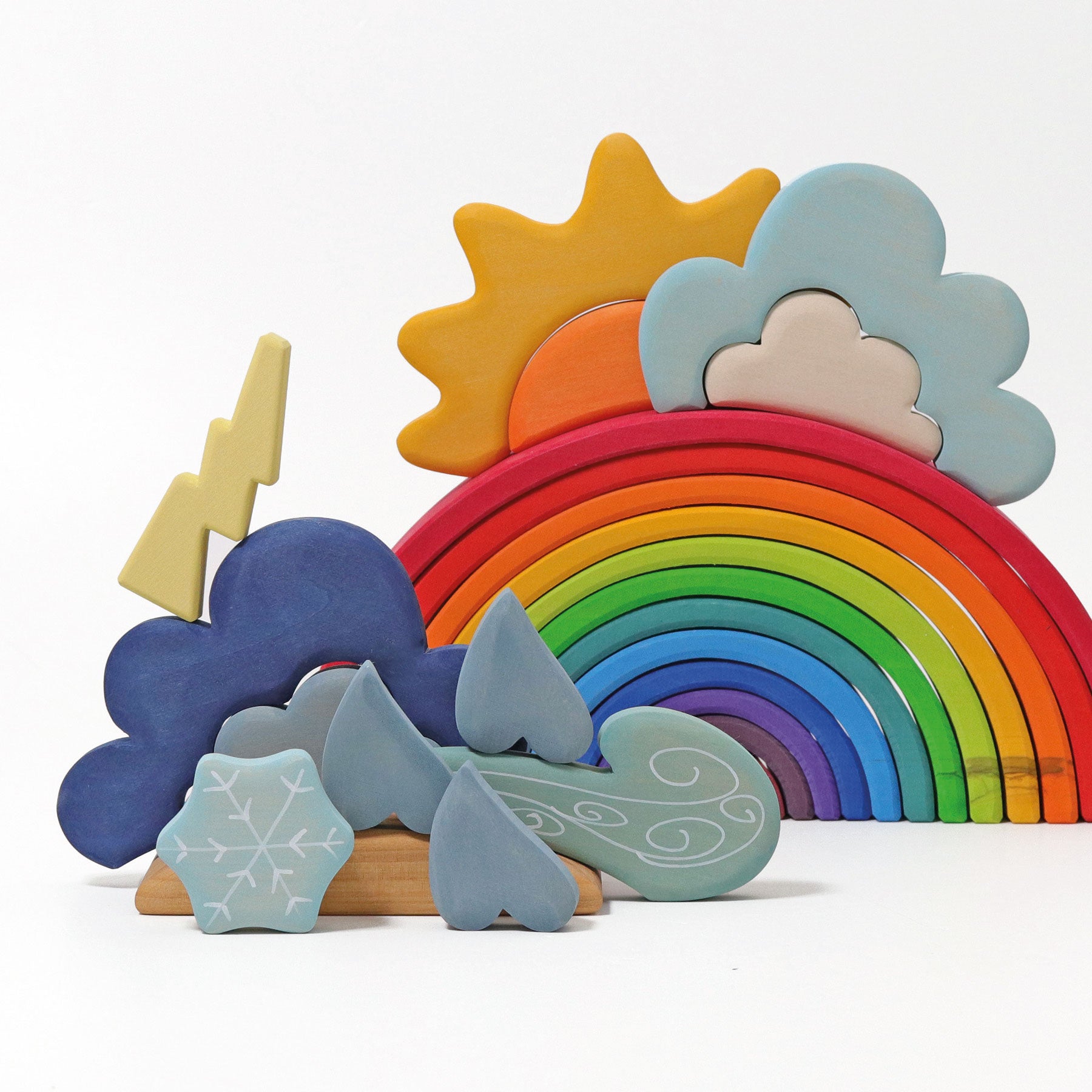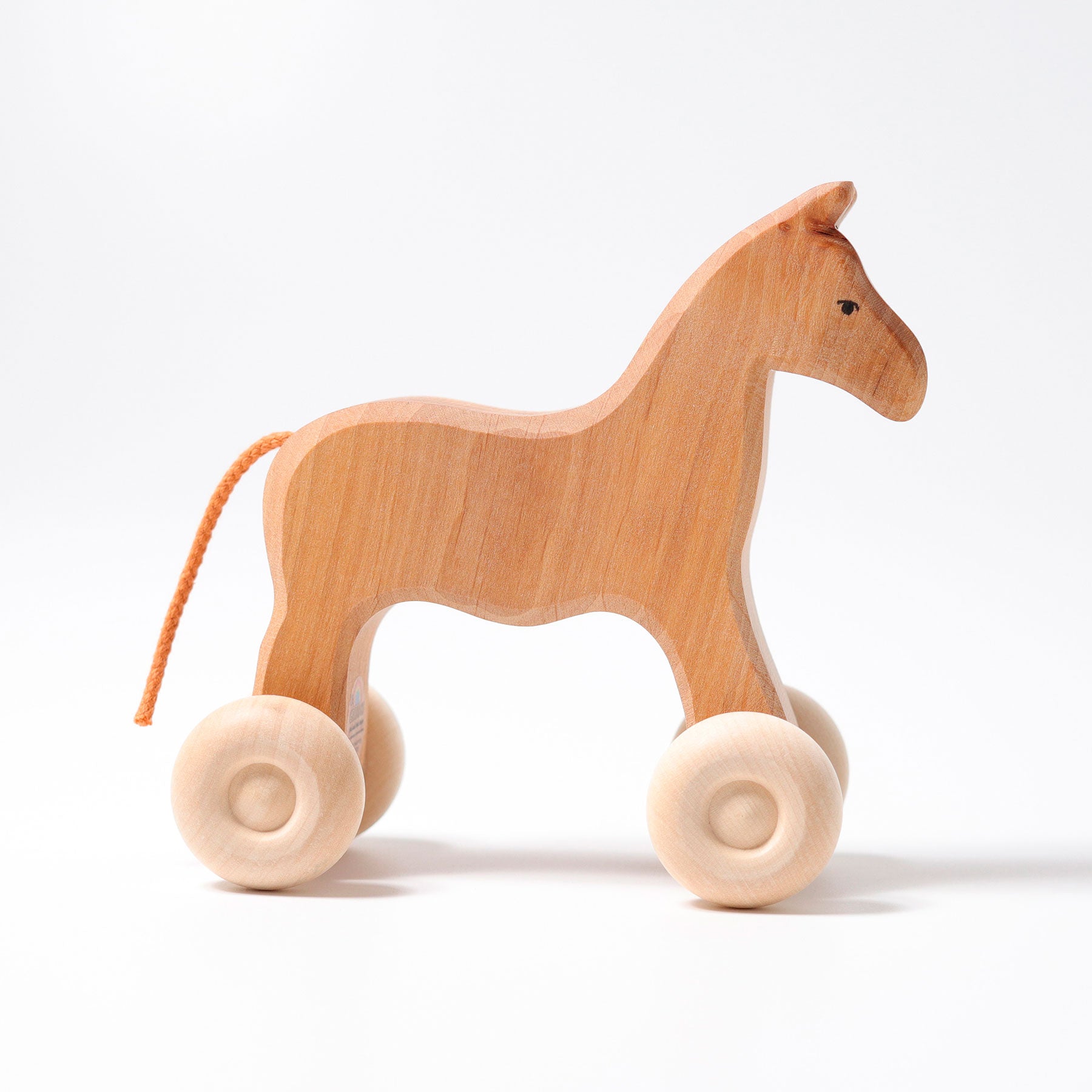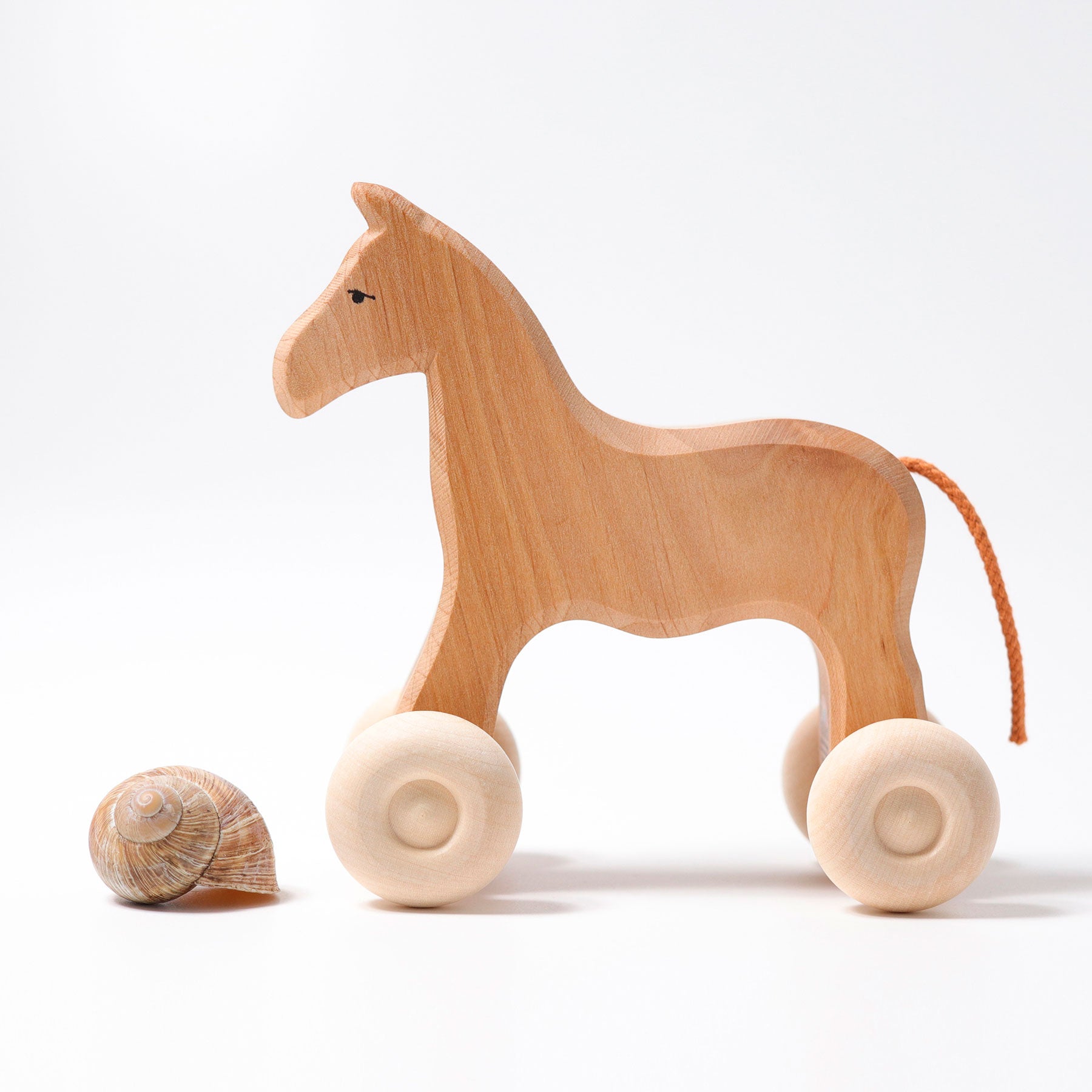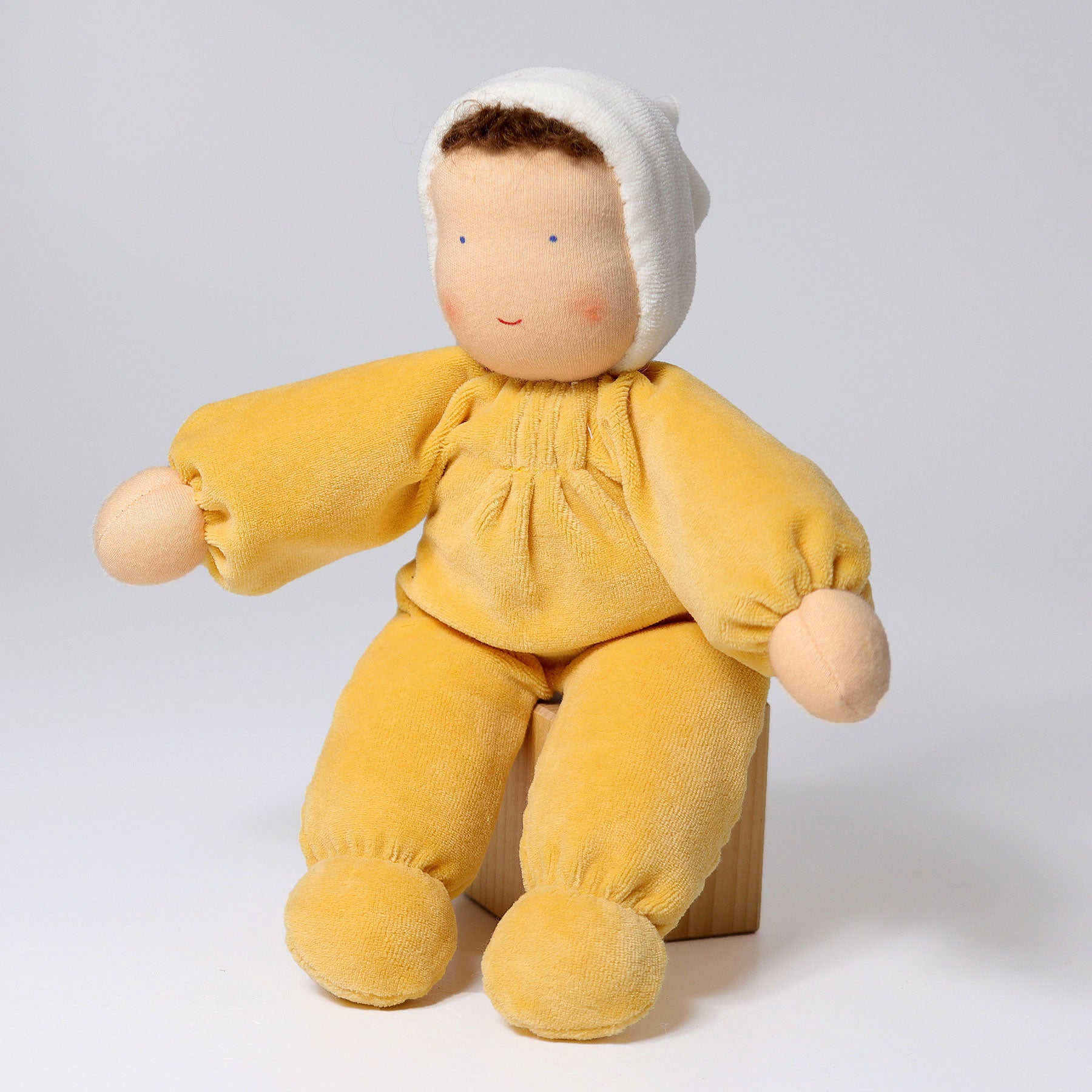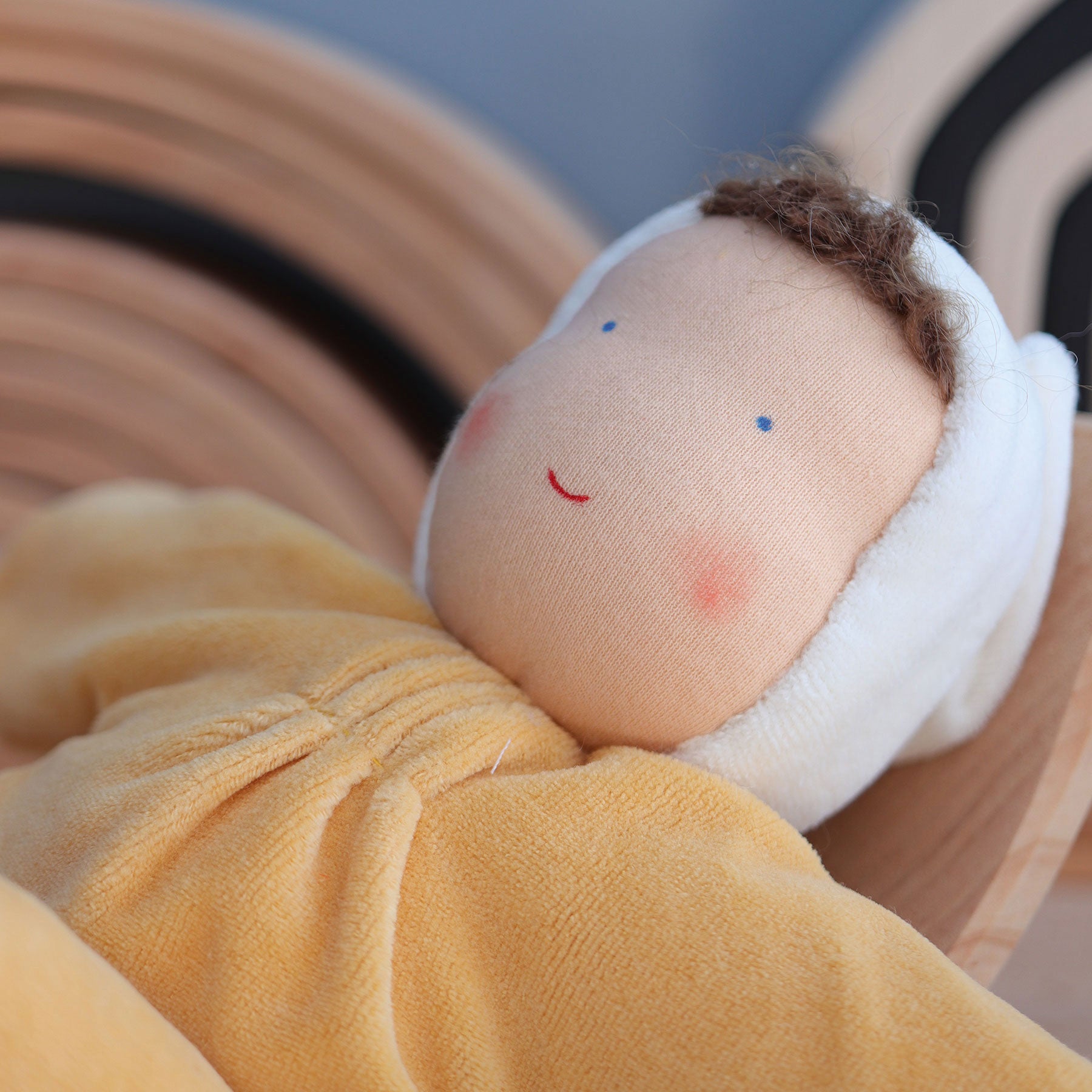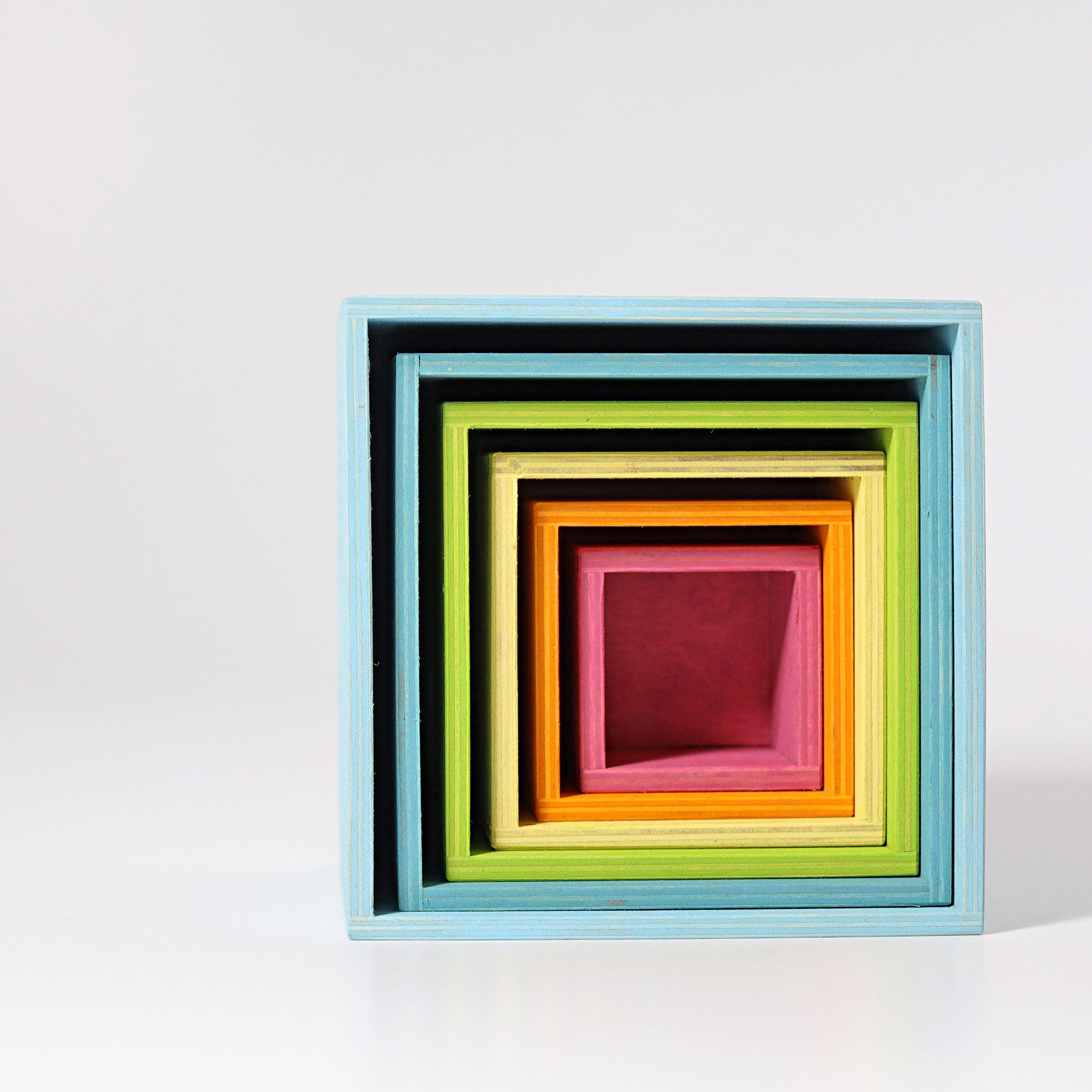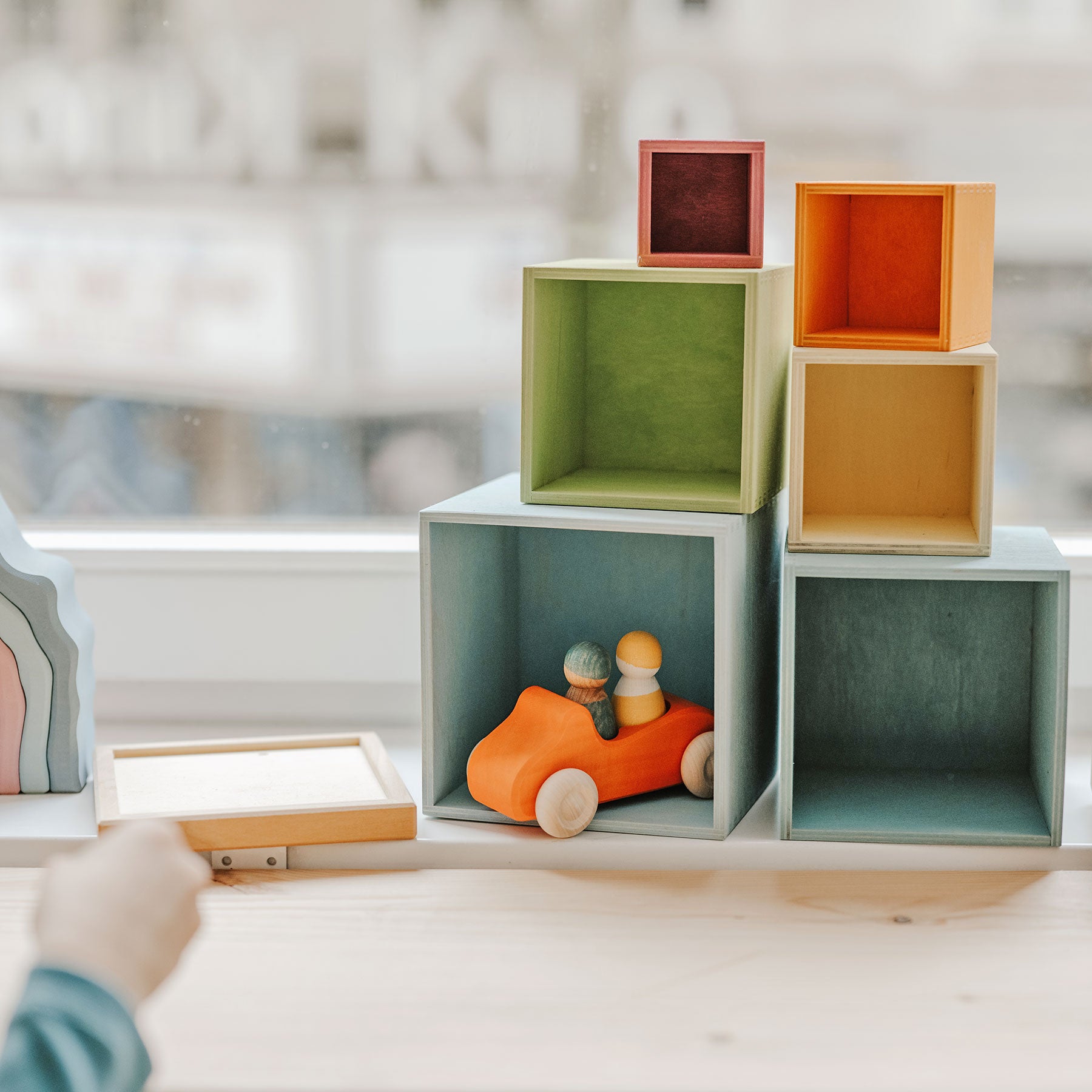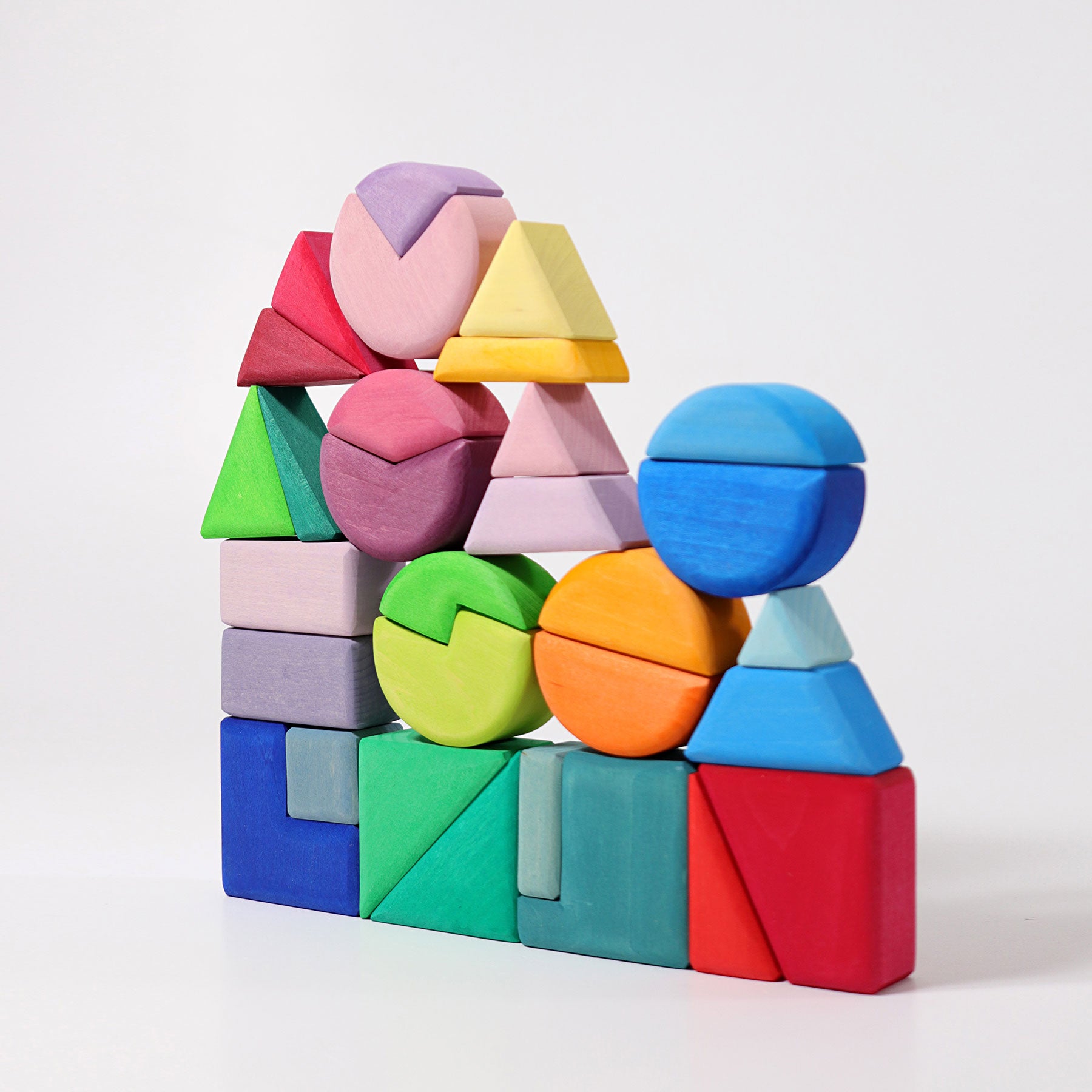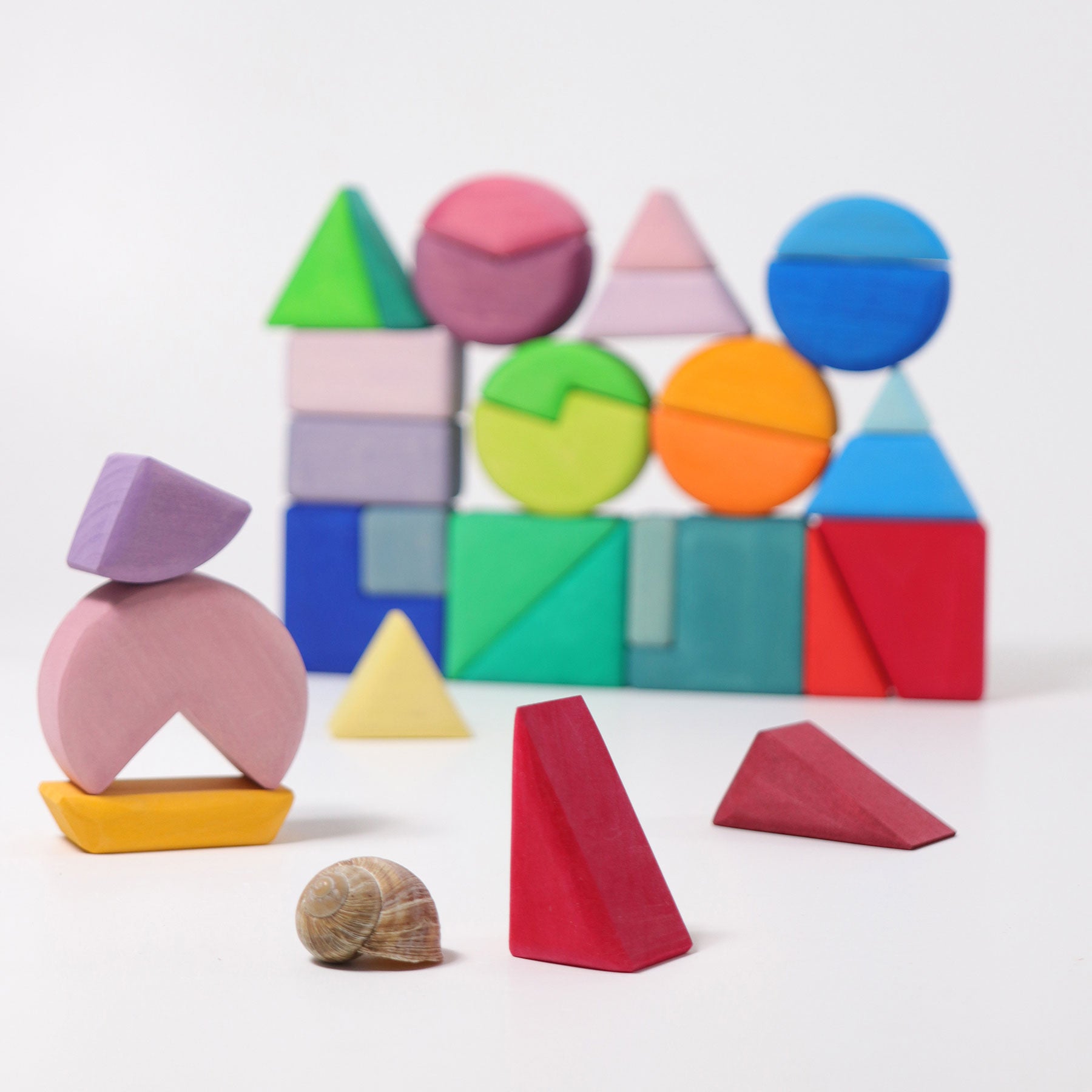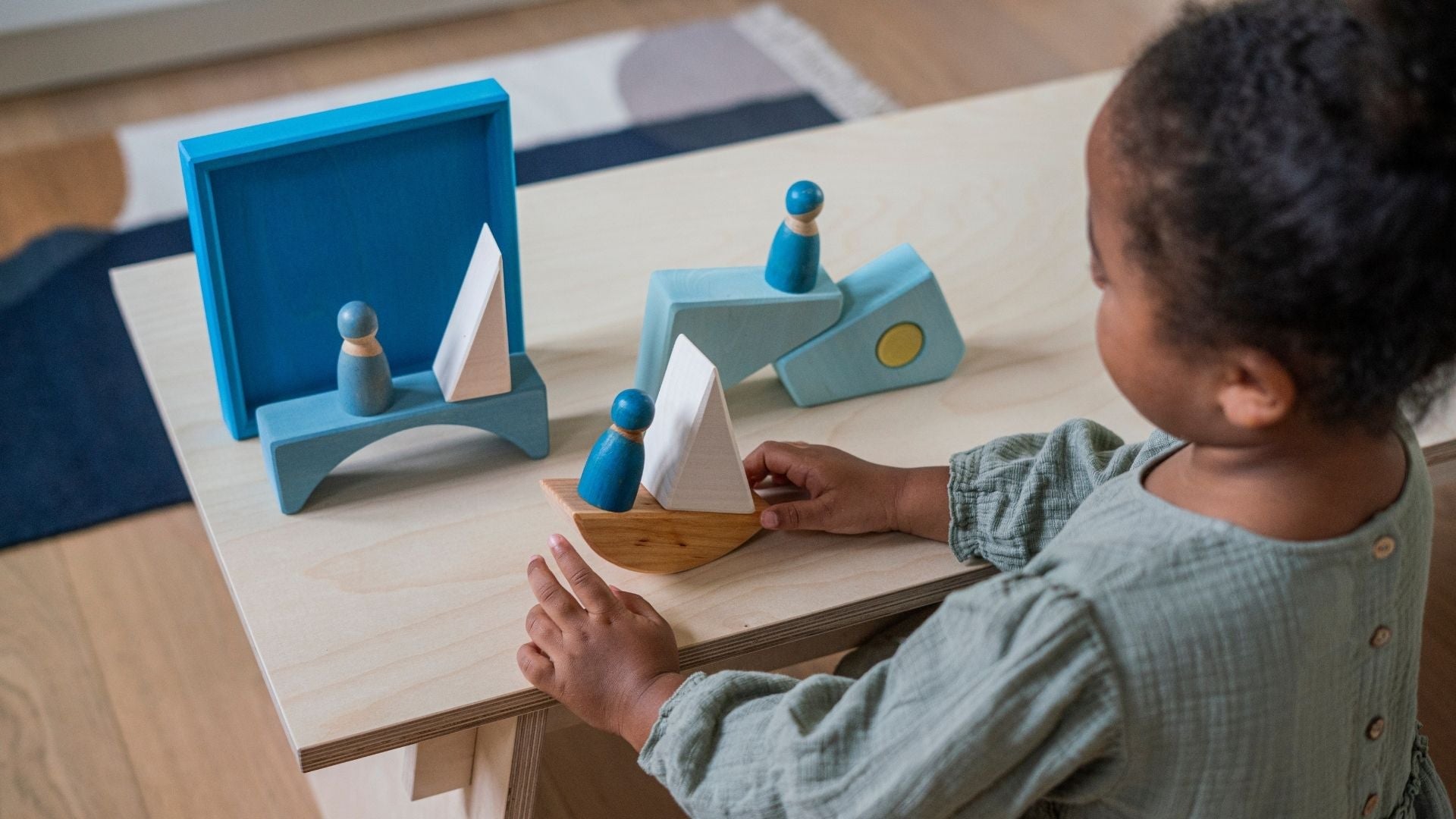Problem: Chaos and boredom in the children's room
When toys are new, they're often played with for hours. They're still unfamiliar and interesting. Sometimes this continues for several days or weeks, but then they just lie there, along with all the other stuff that accumulates on the shelf, on the art table, under the bed, and on the floor. This presents two major problems: First, in the chaos, no one can play properly and concentrate on one thing anymore, and second, with too much stuff, it's just really difficult to keep things organized.
Solution: Toy rotation?
Reducing toys is one option if you've been meaning to declutter anyway. However, if children are attached to their toys and can't part with anything, there's another option: toy rotation. Toy rotation means that not all toys are always available in the children's room. Instead, only a few select items are kept on hand, and the rest are temporarily stored in boxes, for example, in the basement, until a change is made some time later, when the available toys are swapped for others from the boxes. This way, a limited selection can prevent overstimulation and the resulting boredom in the toy chaos. This concept has several advantages:

Overview & Order
When there are fewer play materials in the room, it's much easier to keep things organized. Every piece has its place, and once the play is over, everything can be put away quickly, without having to spend a long time sorting and figuring out where to put things.
With a few baskets or boxes in which the different materials find their place, or an easily accessible shelf, you can see everything at a glance and have it available when needed and put away just as quickly.
Concentration & Creativity
Too many different play materials can overwhelm children and lead to them no longer being able to concentrate on anything.
Fewer stimuli also mean fewer distractions and more focus on what's at hand. This allows children to concentrate much better on one task without countless other play options around them.
When you engage intensively with something, it comes into focus and creative new uses can emerge that you would not have thought of in a superficial engagement.
Appreciation & Variety
If not everything is available at all times, the individual play materials receive more attention when they are there and are therefore more valued.
Because they are only there for a limited time, they are used intensively during that time, and when they are packed away again, the joy of the new old things and the resulting change in the playing situation is often great.
Sustainability & Resource Conservation
Constantly buying new things because the existing ones have become boring also puts a strain on the environment. When existing toys are returned after a period of absence and the enjoyment of playing is as great as with new things, it's a win-win situation for the children, the environment, and your wallet.
In addition, children's interests and play habits are constantly changing, which means that familiar play materials are often played with in completely different and new ways after they have been gone for a while.
Independence & Resilience
The limited selection often makes it easier to decide what to play next. And it can be made independently, which supports children's self-determination.
Children who have a healthy self-confidence and are aware of their own effectiveness can move through the world with a resilience that strengthens them throughout their lives.

Origin: Montessori
Toy rotation originates from Montessori pedagogy and supports the motto "Help me do it myself." Montessori-style play materials therefore often provide a clearly defined framework within which children can freely and independently solve a playful task—for example, in matching or sorting games.
By allowing children to learn things on their own as much as possible and allowing them to make their own choices within a curated pre-selection, as is the case with toy rotation, for example, adults are supporting children in becoming independent and developing their play skills in a focused but creative way.
Tips for implementation
In order to integrate the implementation into everyday family life as best as possible and to avoid generating additional stress, we have collected a few tips here.
How often is rotation done?
You can approach this slowly and see how long the child feels comfortable playing with the existing toys and how much they enjoy them. For example, you could check in after 4-6 weeks to see how things are going. If the materials are still being used, feel free to leave it longer. You'll quickly notice how often you can manage it and how long the child finds their current selection interesting. Don't stress yourself out; instead, find a rhythm that, firstly, remains flexible and, secondly, is good for everyone.
Who decides what stays and what goes away for now?
Depending on the child's age, it's a good idea to decide this yourself or together with them. Young children up to about 3 years old don't necessarily need to be involved. Nevertheless, the selection should, of course, be made in their best interests. After a change, they will surely be excited to admire and play with the "new" things.
Older children certainly already have their own ideas and desires about what they'd like to play with again in the near future. They often already have a certain overview of the things they own. It's also good to let them assess for themselves what they're not currently using in their room and what can be put in the basement for the time being.

What if my child has a favorite toy – does that have to change too?
Of course, having to part with currently beloved toys isn't the intention of toy rotation. It's meant to breathe new life into play and inspire, but it shouldn't feel like a loss. So, of course, current toys can stay, even if you change them. Be mindful of your child's needs.
How can we keep track of the toys and boxes?
We also recommend a few clearly labeled boxes into which the various topics can be sorted and then quickly found again.
What if my child doesn't want to give up his toys?
It's important to explain to your child that the toys aren't disappearing, but are just being put away for a while. If you feel they don't understand this, it might be helpful to involve them in putting things away and let them know where the boxes are stored. Once you've changed things around a few times, your child will know that for every item that's put away, another one comes back.

Extension: Furniture Rotation
Furniture rotation goes a step further than toy rotation. As the name suggests, this involves not only changing play materials but also furniture. For practical reasons, however, changing furniture means rearranging the room rather than completely replacing it.
For example, the furniture can be rotated within the child's room from time to time, creating new and exciting play situations. It's enough to focus on the play areas and not always change everything, including the bed and wardrobe, but the small play areas that are found in most children's rooms can be given a bit of a refresh.
The toy stand can be converted into a shop instead of a shelf, the puppet theater can be turned into a dollhouse, the painting table into a construction table, or the wall shelf with books can be turned into a small seasonal table. There are truly countless opportunities for creativity here. Changing the play environment can create a new atmosphere and inspire new play time and time again.

Conclusion:
In summary, regular toy rotation can definitely lead to children continually rediscovering their play materials and playing with them more intensively, with greater focus and creativity. Keeping things tidy is definitely easier with less stuff. By regularly changing the play environment and adapting it to current needs, the child will always be able to find new enthusiasm for familiar things and keep themselves occupied with them. Nevertheless, it is of course important that toy rotation neither becomes a stressful to-do for the parents nor a source of uncertainty for the children, and that you structure the topic in a way that is beneficial for everyone. Because then toy rotation is more than just a short-lived trend and it can make your everyday life easier as a long-term life hack.
